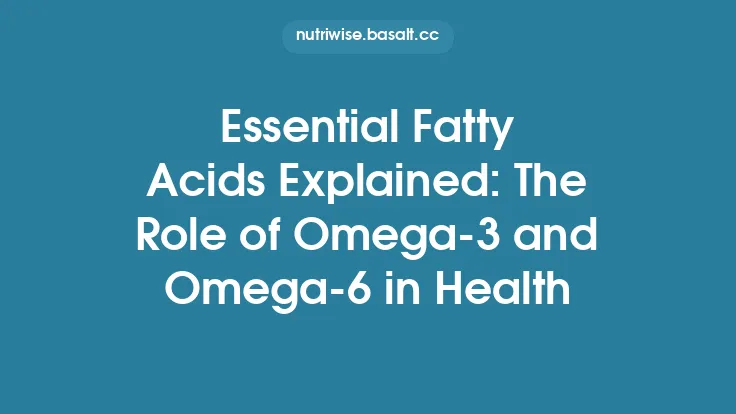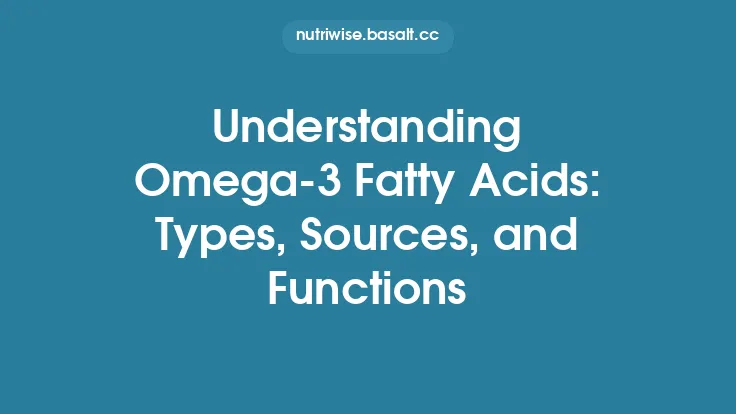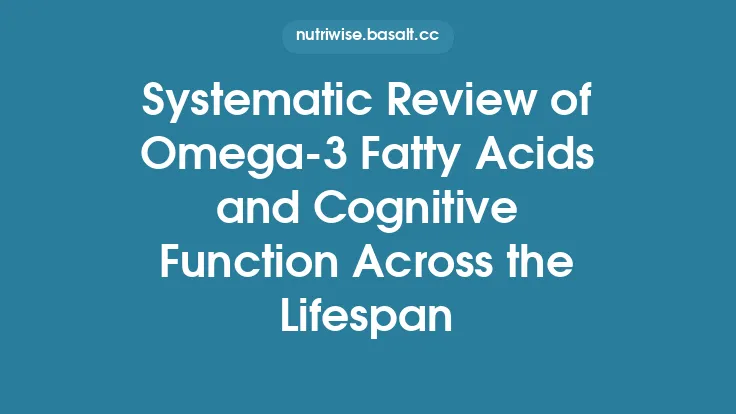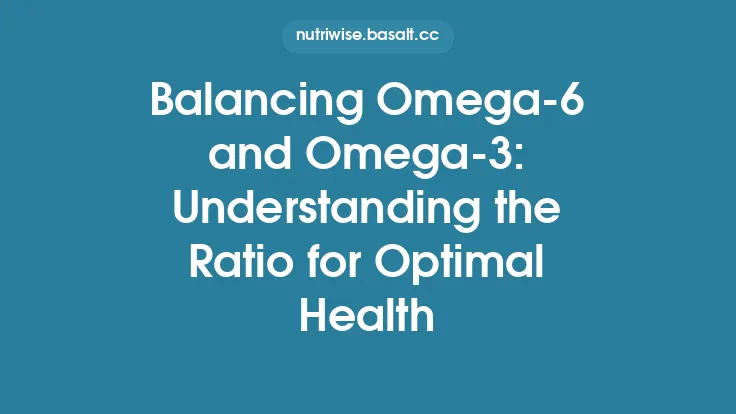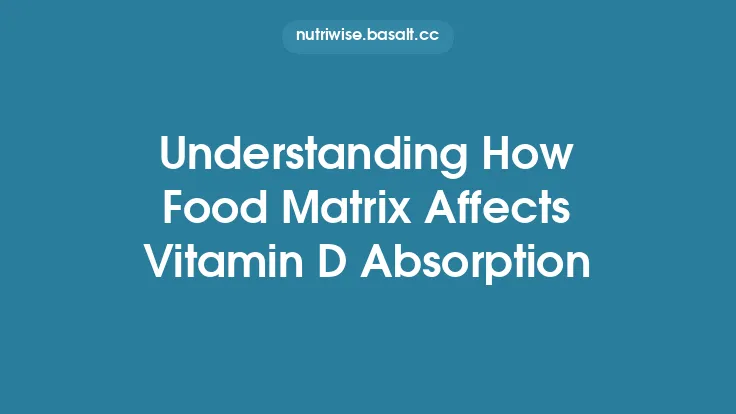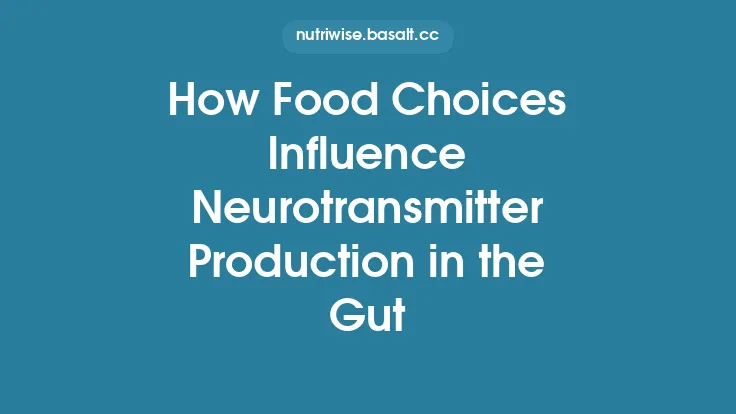Vitamin D is a fat‑soluble secosteroid that plays a pivotal role in calcium homeostasis, immune regulation, and cellular differentiation. Its synthesis, activation, and signaling are tightly regulated processes that can be modulated by a variety of dietary components, including long‑chain polyunsaturated fatty acids (LC‑PUFAs) such as the omega‑3 (n‑3) family. Over the past two decades, a growing body of mechanistic research has illuminated how omega‑3 fatty acids—particularly eicosapentaenoic acid (EPA) and docosahexaenoic acid (DHA)—interact with the enzymes, transport proteins, and nuclear receptors that govern vitamin D metabolism. Understanding these interactions is essential for nutrition scientists, clinicians, and public‑health policymakers who aim to optimize vitamin D status through diet.
Overview of Vitamin D Metabolism
Vitamin D exists primarily as two forms: vitamin D₃ (cholecalciferol), synthesized in the skin under ultraviolet‑B (UV‑B) radiation, and vitamin D₂ (ergocalciferol), derived from plant sources. Both forms undergo a two‑step hydroxylation cascade:
- 25‑Hydroxylation – Occurs mainly in the liver via the enzyme CYP2R1 (and to a lesser extent CYP27A1). The product, 25‑hydroxyvitamin D [25(OH)D], is the major circulating metabolite and the clinical marker of vitamin D status.
- 1α‑Hydroxylation – Takes place primarily in the proximal tubules of the kidney, catalyzed by CYP27B1, producing the biologically active hormone 1,25‑dihydroxyvitamin D [1,25(OH)₂D]. This hormone binds the vitamin D receptor (VDR) to regulate gene transcription.
Catabolic pathways, chiefly mediated by CYP24A1, convert 1,25(OH)₂D to inactive metabolites, ensuring tight control of circulating active vitamin D levels. The entire system is sensitive to substrate availability, enzyme expression, and co‑factor status—all of which can be influenced by dietary lipids.
Omega‑3 Fatty Acids: Types and Biological Roles
Omega‑3 fatty acids are a subset of LC‑PUFAs characterized by a double bond three carbons from the methyl end. The most nutritionally relevant members are:
- α‑Linolenic acid (ALA; 18:3n‑3) – Plant‑derived, serves as a precursor for longer‑chain n‑3 PUFAs.
- Eicosapentaenoic acid (EPA; 20:5n‑3) – Predominantly found in marine fish and algae; a substrate for anti‑inflammatory eicosanoids.
- Docosahexaenoic acid (DHA; 22:6n‑3) – Highly enriched in neural tissue; critical for membrane fluidity and signaling.
EPA and DHA are incorporated into phospholipid bilayers, influencing membrane microdomains (lipid rafts), modulating the activity of membrane‑bound enzymes, and serving as ligands for nuclear receptors such as peroxisome proliferator‑activated receptors (PPARs). Their metabolites (e.g., resolvins, protectins) exert potent anti‑inflammatory and immunomodulatory actions.
Molecular Intersections Between Omega‑3s and Vitamin D Pathways
1. Membrane Composition and Enzyme Accessibility
The hydroxylation steps of vitamin D metabolism are catalyzed by cytochrome P450 enzymes embedded in the endoplasmic reticulum (CYP2R1) and mitochondrial inner membrane (CYP27B1). Incorporation of EPA/DHA into cellular membranes alters phospholipid packing and fluidity, which can:
- Enhance substrate diffusion – More fluid membranes facilitate the movement of vitamin D₃ from the lipid bilayer to the active site of CYP2R1.
- Modulate enzyme conformation – Changes in the lipid environment can affect the orientation of P450 enzymes, potentially increasing catalytic efficiency.
2. Regulation of Gene Expression via Nuclear Receptors
Omega‑3 fatty acids are natural ligands for PPARα and PPARγ. Activation of these receptors leads to transcriptional up‑regulation of several genes involved in vitamin D metabolism:
- CYP2R1 – PPAR response elements (PPREs) have been identified in the promoter region, and PPAR activation can increase hepatic expression of the 25‑hydroxylase.
- CYP27B1 – In renal proximal tubule cells, PPARγ agonism has been shown to augment CYP27B1 transcription, thereby boosting conversion of 25(OH)D to the active hormone.
Concomitantly, PPAR activation can suppress CYP24A1 expression, reducing catabolism of 1,25(OH)₂D and prolonging its biological activity.
3. Interaction with Vitamin D‑Binding Protein (DBP)
Vitamin D circulates bound to DBP, a high‑affinity carrier that protects the hormone from rapid renal clearance. Omega‑3 fatty acids influence the hepatic synthesis of DBP through:
- Transcriptional modulation – EPA/DHA can activate sterol regulatory element‑binding proteins (SREBPs) that indirectly affect DBP gene expression.
- Altered glycosylation patterns – Changes in hepatic lipid metabolism may modify post‑translational glycosylation of DBP, influencing its binding affinity for vitamin D metabolites.
These effects can shift the free versus bound fractions of vitamin D, impacting tissue availability.
4. Anti‑Inflammatory Milieu and Vitamin D Signaling
Chronic low‑grade inflammation down‑regulates VDR expression and impairs downstream signaling. Omega‑3‑derived resolvins and protectins dampen NF‑κB activation, thereby:
- Preserving VDR transcription – Reduced inflammatory signaling maintains VDR mRNA levels in target tissues such as immune cells and intestinal epithelium.
- Facilitating co‑activator recruitment – A less inflamed cellular environment improves the interaction between VDR‑RXR heterodimers and transcriptional co‑activators, enhancing vitamin D‑responsive gene expression.
Impact on Enzymatic Conversion of Vitamin D
Experimental studies using hepatocyte and renal cell models have quantified the kinetic consequences of omega‑3 enrichment:
- Increased Vmax for CYP2R1 – Membrane incorporation of DHA raised the maximal velocity of 25‑hydroxylation by ~30 % without altering Km, indicating enhanced catalytic turnover.
- Reduced Km for CYP27B1 – EPA exposure lowered the substrate affinity constant for 25(OH)D, suggesting more efficient conversion to 1,25(OH)₂D at physiological concentrations.
These kinetic shifts translate into higher circulating levels of both 25(OH)D and 1,25(OH)₂D when omega‑3 intake is adequate.
Modulation of Vitamin D Receptor Signaling
Beyond metabolic conversion, omega‑3 fatty acids affect the downstream signaling cascade:
- Lipid Raft Redistribution – DHA enriches lipid rafts, promoting the co‑localization of VDR with its heterodimeric partner RXR and with co‑activators such as SRC‑1. This spatial reorganization enhances transcriptional potency.
- Epigenetic Influences – EPA/DHA can modify histone acetylation at VDR target gene promoters, facilitating a more permissive chromatin state for vitamin D‑induced transcription.
Collectively, these mechanisms amplify the physiological actions of vitamin D, ranging from calcium absorption to antimicrobial peptide production.
Clinical and Epidemiological Evidence
Observational cohorts consistently report positive correlations between dietary omega‑3 intake (or plasma EPA/DHA levels) and serum 25(OH)D concentrations. For instance:
- NHANES data (2015‑2020) – Adults in the highest quintile of EPA+DHA intake exhibited a mean 25(OH)D level 5–7 nmol/L higher than those in the lowest quintile, after adjusting for sun exposure, BMI, and season.
- Randomized controlled trials – Supplementation with 2 g/day EPA/DHA for 12 weeks increased 25(OH)D by ~8 nmol/L in overweight individuals with baseline insufficiency, independent of changes in dietary vitamin D.
Intervention studies also demonstrate that combined omega‑3 and vitamin D supplementation yields synergistic improvements in markers of bone turnover and immune function, supporting the mechanistic links described above.
Implications for Dietary Recommendations
Given the mechanistic and empirical data, nutrition guidelines can incorporate the following considerations:
- Adequate Omega‑3 Intake – Aim for ≥250 mg EPA + DHA per day for adults, aligning with many cardiovascular health recommendations. This level appears sufficient to favorably modulate vitamin D metabolism.
- Timing of Consumption – Co‑ingestion of omega‑3‑rich foods (e.g., fatty fish) with vitamin D‑containing meals may enhance intestinal absorption of the fat‑soluble vitamin, though the primary effect is post‑absorptive.
- Population‑Specific Strategies – Individuals with limited sun exposure, higher adiposity, or chronic inflammatory conditions may benefit most from combined omega‑3 and vitamin D optimization.
Future Research Directions
While the current evidence base is robust, several gaps remain:
- Dose‑Response Characterization – Precise quantification of the omega‑3 dose required to achieve maximal up‑regulation of CYP2R1 and CYP27B1 in vivo.
- Genetic Modifiers – Exploration of polymorphisms in PPAR, CYP, and VDR genes that may influence individual responsiveness to omega‑3‑mediated vitamin D modulation.
- Long‑Term Outcomes – Large‑scale, longitudinal trials assessing whether omega‑3‑enhanced vitamin D status translates into reduced incidence of osteoporosis, autoimmune disease, or infection.
Advances in lipidomics, transcriptomics, and metabolomics will enable more granular mapping of these nutrient‑nutrient interactions.
Conclusion
Omega‑3 fatty acids exert a multifaceted influence on vitamin D metabolism through alterations in membrane dynamics, transcriptional regulation of key hydroxylases, modulation of vitamin‑binding proteins, and reinforcement of VDR signaling pathways. These mechanisms collectively raise circulating levels of both 25(OH)D and its active form, while preserving the functional responsiveness of target tissues. Integrating adequate omega‑3 intake into dietary patterns therefore represents a biologically plausible strategy to support optimal vitamin D status, especially in populations at risk of deficiency. Continued interdisciplinary research will refine dosage recommendations and uncover personalized approaches to harnessing this nutrient synergy for health promotion.
